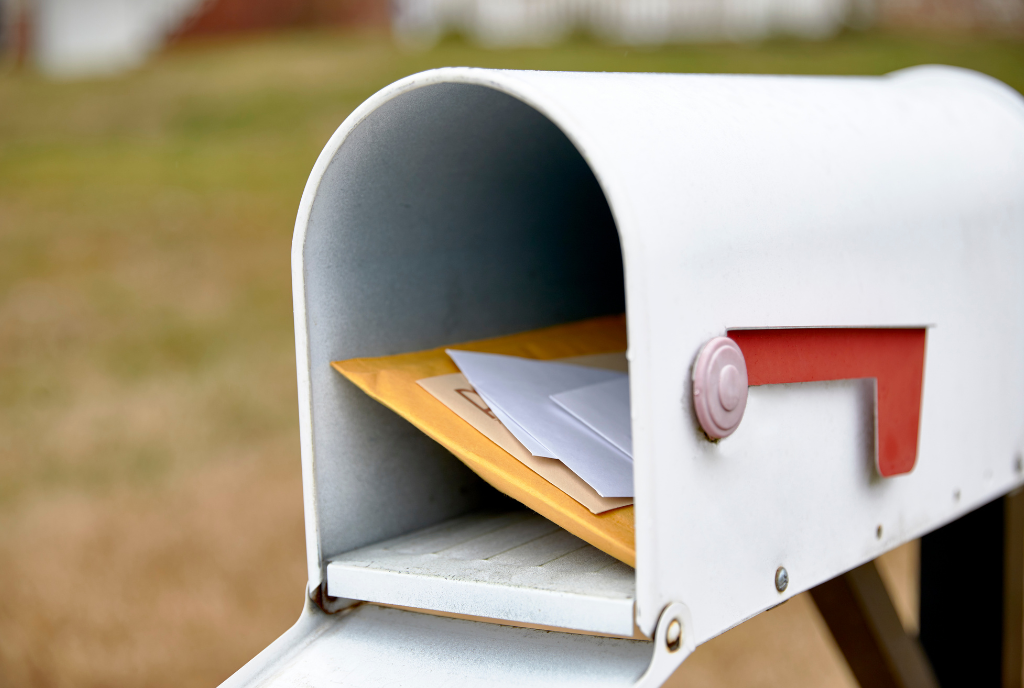All Resources
How to Protect Yourself from Mail Fraud

- Informed Delivery by USPS: This complimentary service sends you daily notifications about the mail you're set to receive, making mail theft detection easier. Learn more.
- Limit Exposure: You can limit your exposure to mail fraud by utilizing online conveniences like eStatements, online Bill Pay, direct deposit, and online banking.
- Opt-Out: You should opt out of receiving credit card and insurance offers. You can do so by calling 1-888-5-OPT-OUT (1-888-567-8688) or on the web at https://www.optoutprescreen.com. This tells credit card companies to stop sending pre-approved applications to your house. By filing a simple change of address form with the post office or contacting creditors, an identity thief can have your personal mail sent to their address. Banks and other companies now send letters to both the new and old addresses when a change is made to stop this type of fraud.
- Lock your mailbox: If your postal carrier is willing, you can buy a padlock for your mailbox. Place it unlocked inside your mailbox. When the carrier delivers your mail, they lock the box. This works well with rural-delivery-style boxes with a hole to accommodate a lock, or you can drill holes in a wall-mounted box. The method is not foolproof, however. Persistent thieves have been known to use hacksaws to remove locks; some smash open mailboxes with baseball bats -- or even steal the mailbox, lock and all.
- Replace a wall-mounted mailbox with a mail slot: If you have door-to-door delivery, ask your local Post Office if you can replace your mailbox with a mail slot on your front or garage door. The postmaster needs to approve any changes in delivery. If you add a mail slot, make it large enough to accommodate catalogs and boxes of checks. However, mail slots are not allowed in rural delivery areas or newer neighborhoods with cluster boxes.
- Buy a security mailbox: Heavy-duty metal boxes are available in both wall-mounted and free-standing models (the latter may be sunk in concrete to prevent vandalism.) Security mailboxes typically have a slot for the carrier to deliver mail. Mail goes down a chute and into a locked compartment.
- Get a post office box: If theft is a concern, the cost of renting a post office box may be worth the investment since thefts from such boxes are rare, according to postal authorities.
- Consider a parcel locker: If you own a home-based business and receive frequent shipments of valuable goods, you may wish to invest in a parcel locker. However, if you use multiple delivery services, you'll need one for postal deliveries and a separate locker for others, such as Federal Express or United Parcel Service.
- Pick up mail promptly: Mail thieves often follow carriers on their routes, striking within 15 minutes after delivery. If you're home during the day, pick up mail as soon after delivery as possible. Ask a trusted neighbor to get your mail if you're not home. Thieves can steal mail from your mailbox to get credit card applications and other sensitive data.
- Outgoing Mail: Outgoing mail is especially lucrative for thieves because it can include bills you pay by check or with credit card. It's more common for mail to be stolen from apartment or housing complex mailboxes because they combine several households - mail in one place.
- Keep your mailbox visible: Trim shrubbery to keep your mailbox as visible as possible, eliminating hiding places for thieves.
SUGGESTED ARTICLES
All content is for informational purposes only and does not constitute legal, tax, or accounting advice. You should consult your legal and tax or accounting advisors before making any financial decisions.